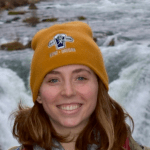By Alexandra Corvello, Rural Community & Economic Development Specialist, Lane County Community & Economic Development Department
People typically say gathering data and researching is boring. They like the results that come from it—the cost benefit analysis, the decisions made based on actual facts, and the pretty, oh so pretty, maps and graphs. The process of it though, is just not something people like to talk about. When I think about the researching process… and I’m guessing what most people think about is—
- the endless lists and excel spreadsheets,
- vortex of internet search dark holes,
- the frustrating tangents that cause halting work or redoing of previous research,
- and dark, massive library basement stacks
The last one is something I have never had to deal with, due to growing up in the 90’s, but has caused so many infamous stories that it has become part of our cultural memory. In short, the process would be labeled tedious and the farthest thing from “sexy” you could get.
The first few months of my AmeriCorps RARE term has made me start to change my tune about researching. My post-grade-driven university research for my placement has been surprisingly seductive.
To give some context, I work on a regional level, which means I am trying to be available to help many different rural communities instead of just one. A major project for my term is to help map the assets of these rural communities around economic development and broadband internet access. While asset mapping sounds sophisticated—maybe even “sexy”–, it really is just putting all of your research and reams upon reams of notes into one decently summarized document. This process is vital to figuring out gaps in services, informing where regional resources should be directed, and maintain our regional institutional knowledge. A fun side benefit is that it also helps to break down the information silos that form around department boundaries, city/county lines, and organizational bubbles—which mean you get to learn a lot about a place.
As part of the research, we have been meeting with the rural communities and hearing from them about: what is new; their thoughts on economic development and broadband access in their communities; and how much I got wrong with my pre-meeting research. The last one always causes anxiety on my side and mostly amusement from the communities’ perspective. It’s not close to being done, but the information and interactions I have gotten from this research has been eye-opening and fascinating.
It has been fun to research information around these communities, from finding their physical and cultural assets to getting a breakdown of their economy. For me though, the best part of it has been going to these communities to see their downtowns in person and talk with some of the people that live and work there. Our region has such a unique and beautiful diversity of communities that are located relatively close to each other. While going to the University of Oregon I got sucked into the college campus life and missed all of these cool communities that have a lot of great local businesses, festivals, and intricate economies.
I have gained a whole new appreciation for the region. Plus I am able to contribute to the region by collecting this important information and turning it into something that can be used for local and statewide policymakers and organizations. The research process will never be blatantly “sexy”, but through my first few months with AmeriCorps I have gleaned that its process does have fun and surprising moments that lead to a subtlety seductive view of your surrounding world.
 About the author, Alexandra Corvello: Alexandra majored in Economics and Environmental Studies at UC Santa Cruz and got her Masters in Community and Regional Planning at the University of Oregon. Originally from the California Bay Area, Alexandra wants to help communities become more resilient to unexpected changes from disruptive events, including natural hazards, economic downturns, etc. She looks forward to using the knowledge gained in school to the benefit of the rural communities in Lane County.
About the author, Alexandra Corvello: Alexandra majored in Economics and Environmental Studies at UC Santa Cruz and got her Masters in Community and Regional Planning at the University of Oregon. Originally from the California Bay Area, Alexandra wants to help communities become more resilient to unexpected changes from disruptive events, including natural hazards, economic downturns, etc. She looks forward to using the knowledge gained in school to the benefit of the rural communities in Lane County.
Does community development work interest you? Are you looking for a life changing experience in rural Oregon? Learn more about serving with the RARE AmeriCorps Program via our website: https://rare.uoregon.edu/application-process/member-application-process

